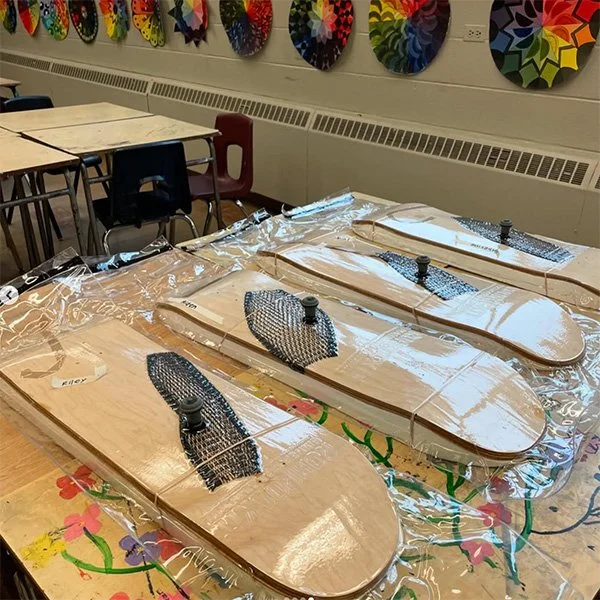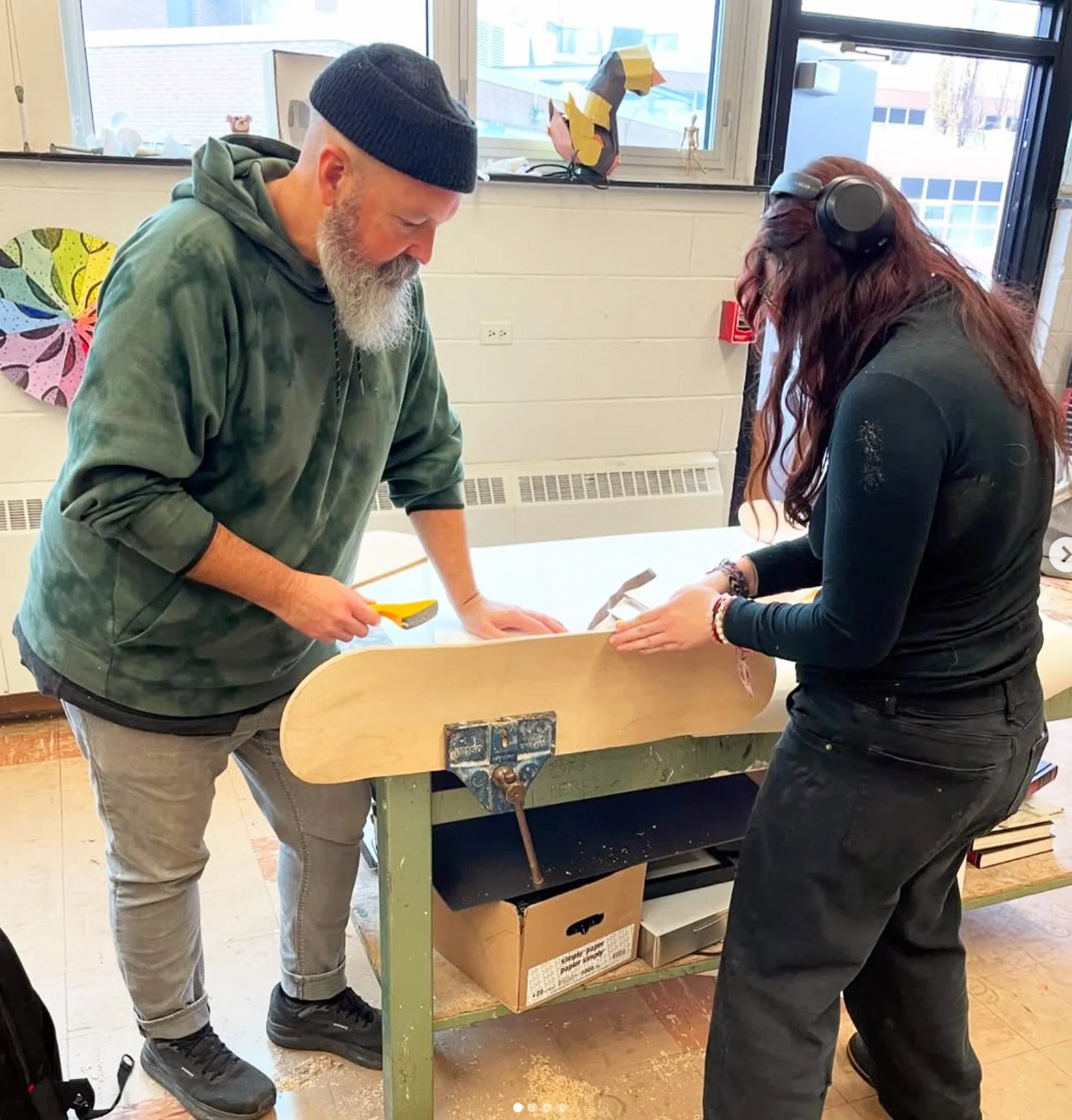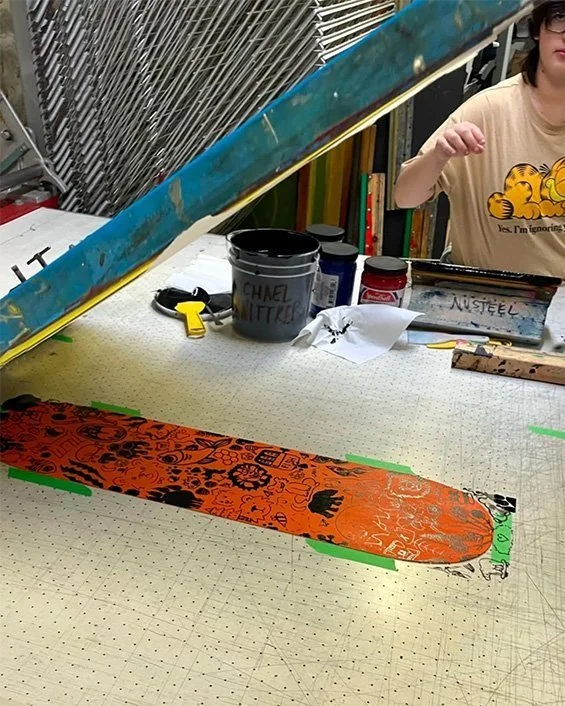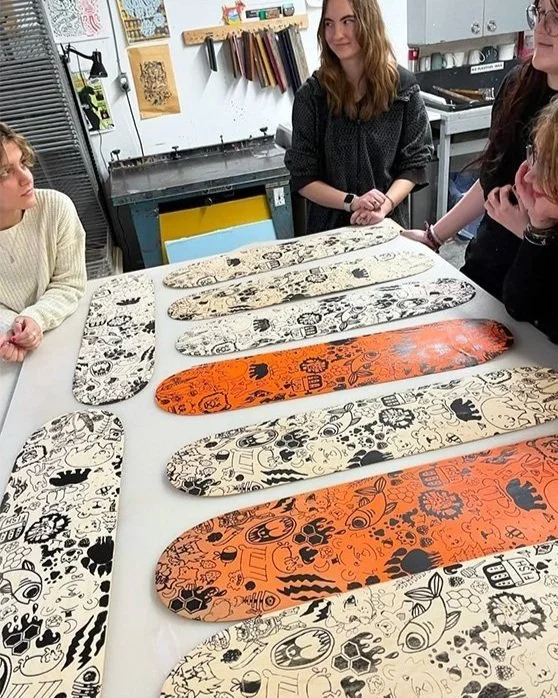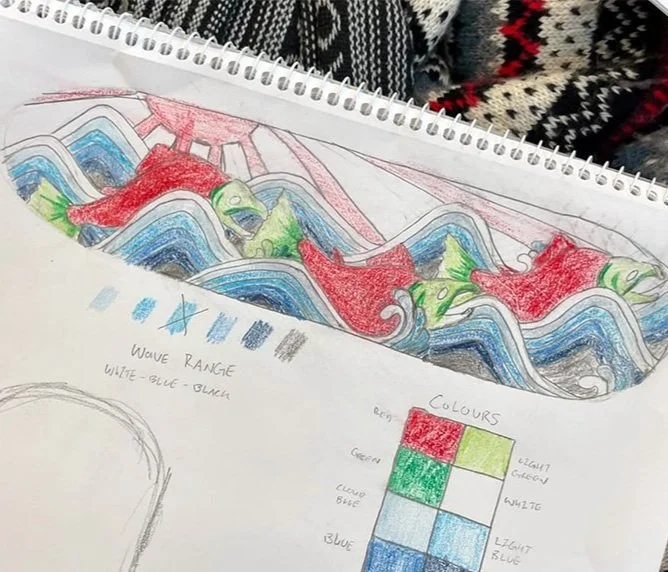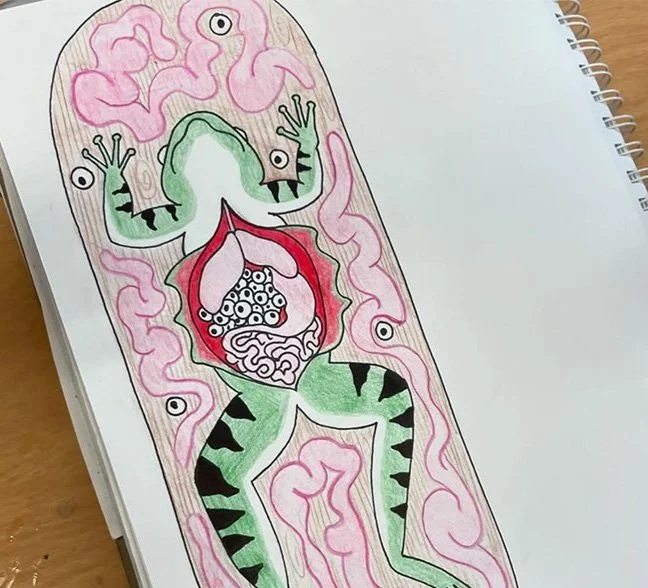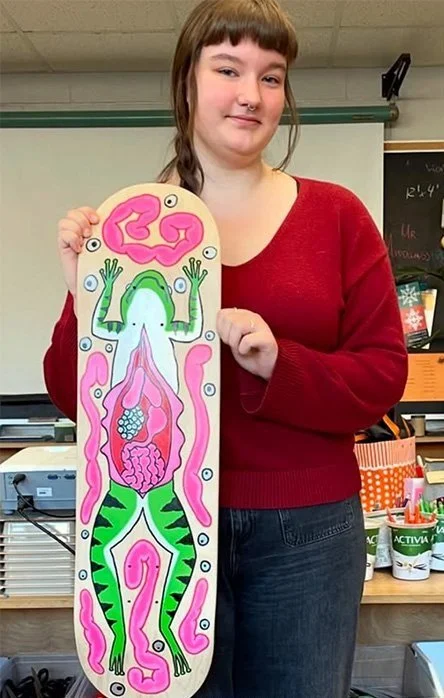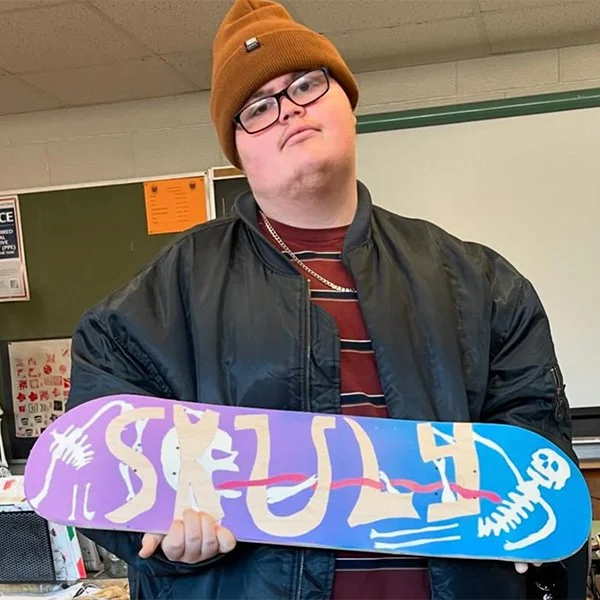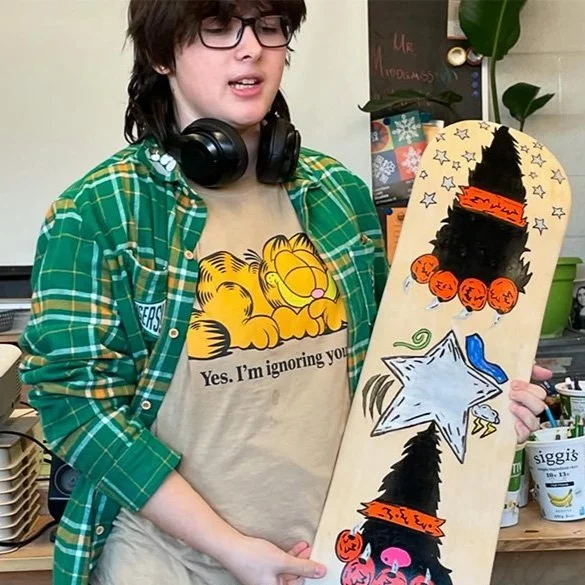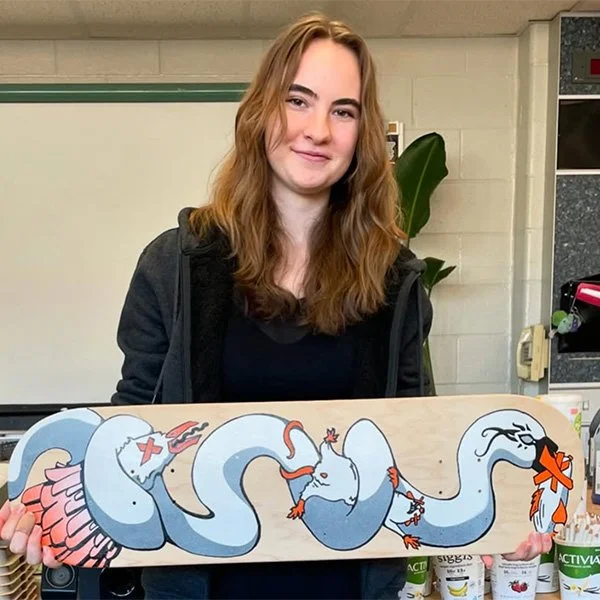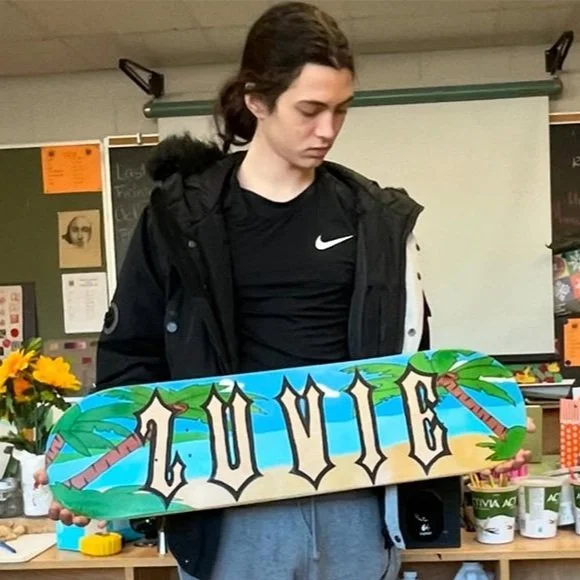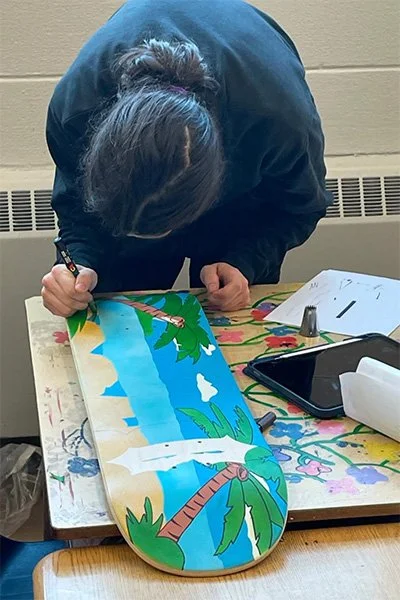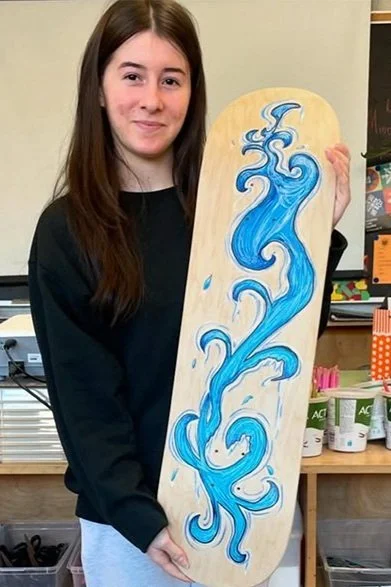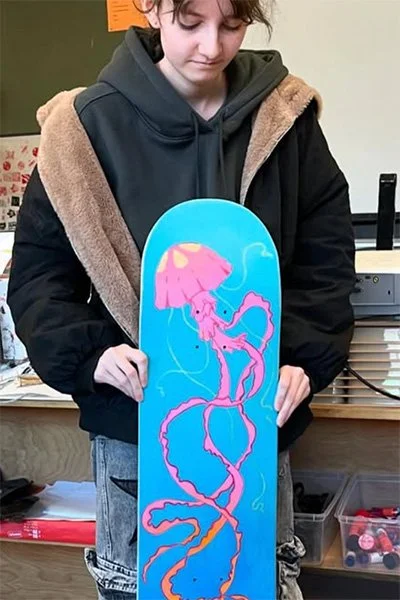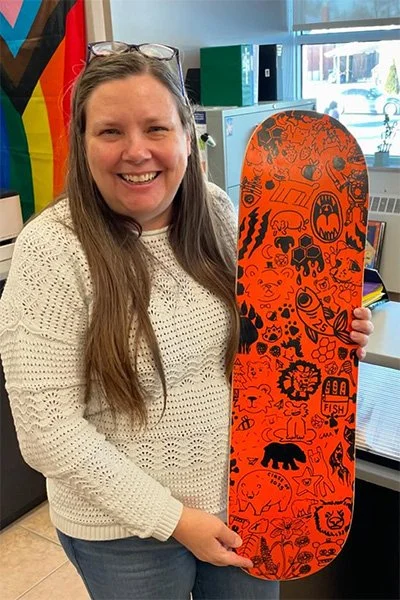Craig Morrison is certainly not new to this website. Craig is our Pedagogy Pro, you can read all about his work Teaching Through Skateboards at Roarockit.org
We’ve featured posts and stories about Craig many times over the years, but this article is about something different. Craig was invited back to the high school he attended in Hamilton Ontario, to assist in classes there to build skateboards. I find this full-circle story really satisfying - that a student would become a teacher, start a brand new school, retire, then come back to help start a new program at the same school he studied at! Let’s get into what Craig has to say about his experience at Glendale Secondary School.
Hi Craig, some people don’t have great memories of their high school days. How did you end up agreeing to go back there?
It was a pretty deeply emotional experience, not only teaching back at my old high school, but also teaching in the very visual art classroom that I attended as a teenager in the early 1980s that first piqued my interest in arts and design. A student actually offered up their seat so I could sit in the very spot I sat in 40 years ago, ha!
Glendale S.S. in Hamilton’s east end was a very sports-oriented school at the time I attended - not the arts magnet school it is now - so my high school experience as an alternative culture kid was pretty isolating until I found a home in the art studio. I have often reflected back on this formative experience and used it as fuel as an education designer. This motivated and inspired me to design a school for students who haven’t previously been successful in school where all subjects are learned through art and design. As the retired Founding Teacher of Oasis Skateboard Factory, the world’s first skateboard design alternative high school in Toronto, I designed the whole educational experience to reengage so-called “drop-outs” to “drop-in” in both senses of the term - as a skate maneuver and as reengaging with their education. Skateboards are often misunderstood by adults as not worthy of academic attention, but skateboard design can creatively connect to all subjects across the curriculum. After moving back to Hamilton three years ago, I reconnected with Victoria Alstein who had done her student teaching practicum at OSF and is now the Assistant Head of Arts at Glendale S.S. and is one of the coolest teachers I know. She invited me in to work with her students, not only as her old Mentor Teacher but in my current role as Roarockit’s Pedagogy Pro, to design and deliver an exemplar of a bigger, future ongoing skateboard design program at the school… the kind of highly engaging, real-world programming my teenage self and other education outsiders would have really benefitted from.
What was the main goal of this program at Glendale?
I worked with students in the split Gr. 11 Printmaking/Sculpture class to experience a really high-interest final project. As the culmination of all their learning in Ms. Alstein’s course, the goal was to have students apply and combined their previous 2D and 3D explorations in the course to produce a real-world, professional product that they previously didn’t imagine being able to produce themselves.
I see some slideshow scenes in the classroom. What topics and discussions were covered in those sessions?
It is often difficult for teenagers to imagine a career in the arts after high school, so the teacher wanted me to start with a talk about my own career in the arts and education, illustrated with examples from my award-winning school OSF, and to then introduce them to the skateboard industry and how skateboards are mass-produced. Then we moved on to hands-on demos of how Roarockit materials and methods are accessible ways to prototype their own skateboard design products.
Every one of the finished boards looks to be a unique artistic expression. What was the direction the students were given to come up with such different designs?
Skateboards are an amazing multi-dimensional 3D canvas for students to shape and apply their own unique art that is usually outside of students’ previous educational experience, as most art programs focus on a traditional flat 2D canvas. In my experience, the best school project outputs demonstrating deep learning occur when a teacher presents students with “enabling constraints” rather than using an “anything goes” approach. Ms. Alstein and I gave them an inspiring prompt about ‘Movement’, leading students to express this Principle of Design in their graphic and asked them to limit their individual colour palette of the spray paint they stenciled with. We also encouraged students to leave some wood exposed in their graphics… students were so proud of their woodworking, so it was an opportunity to showcase their new material understanding of Maple wood.
There was an art exhibition part of this project. It looks quite professional, was that part of the student experience?
Throughout my teaching career mentoring other teachers, I have always promoted educators to look beyond the classroom walls for public, professional platforms to share student creativity. Ms. Alstein found the opportunity for students to show at McMaster University’s Innovation Hub, which placed their work in a post-secondary space beyond the classroom walls. This gave the public the opportunity to see the work of emerging artists and designers as on par - and maybe even more interesting - than what adults produce.
What would you say was the biggest learning takeaway from this course?
In my opinion, academic learning should be fun, hands-on, minds-on, real-world learning that produces things that students are proud of. The teacher told me that building skateboards proved to be one of the “most memorable and meaningful projects for students this year”.
“At Glendale we go above and beyond when it comes to offering unique opportunities for our art students. They came to class early, excited to work on their boards with a level of dedication I haven’t seen in the past. The project even hooked some of our less-frequent attenders and gave students who haven’t felt very successful in the past a sense of pride for the first time. One of the greatest moments of pride was when their boards were displayed at a local gallery exhibition for their families, friends and community members to enjoy. I’m very excited to continue this project for years to come.” - Ms. Alstein
What would you say the students enjoyed the most?
Because of school scheduling with the semester ending, students had a pretty tight timeline to pitch their planned design and execute them. They had to stay on task and work really hard to complete their skateboards. At the final critique, students were very proud of how successful they were learning a new process and making something they had never done before, something they didn’t expect to do in their art studio. As I mentioned, most students haven’t done much woodworking previously, so many found that part both challenging and satisfying, and most were stoked to see the results of this completed with the application of their own, unique graphic style. Students really enjoyed seeing an object of value to them as youth with their own art on it!
Are there any interesting moments about the class you can share with our readers?
In my role as Roarockit’s Education Consultant, I often tell teachers doing their first project with Roarockit materials and methods to look out for a very surprising and almost meditative moment where only the sounds of sanding is heard in the classroom, when everyone is totally engaged with shaping their very first skateboard. This definitely happened in this class, amongst all the other lively conversations we had with students as they worked and reworked their graphic designs to - as you can see - amazing results!
Personally, one of the most satisfying moments for me was one I heard about after the project was completed: a student, who has previously struggled with attendance and seeing any school projects through, took his skateboard into the school office to show the school administration because he was so proud of his completed skateboard!
I hope other teachers, administrators or community folks looking for ways to teach through skateboards are inspired by my experience to check out Roarockit.org to engage and reengage young people!
Norah Jackson,
Roarockit Skateboard Company





